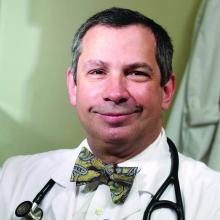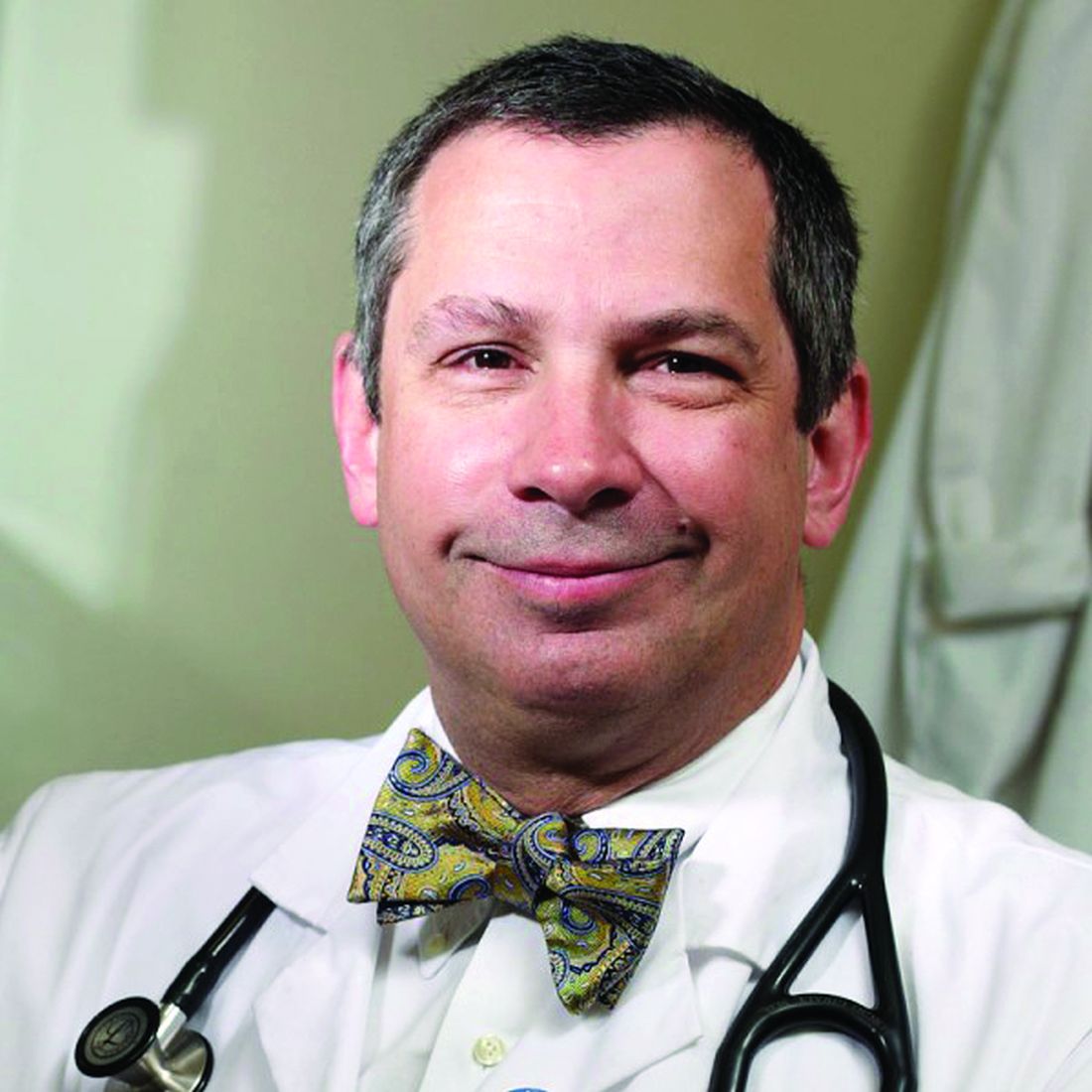User login
“In an otherwise healthy treatment-naive patient with multiple myeloma, to ensure the best chances of overall survival, I would always recommend standard of care consolidation therapy of chemotherapy + ASCT,” said Sergio Giralt, MD, of New York’s Memorial Sloan Kettering Cancer Center, debating the merits of ASCT versus CAR T as consolidation therapy at the Lymphoma, Leukemia & Myeloma (LLM) Congress 2023 in New York.
Final results from the phase II GRIFFIN trial highlight the benchmarks that CAR T-cell therapy would need to reach to achieve equivalence with ASCT. At a 4-year follow-up, newly diagnosed MM patients who received daratumumab, lenalidomide, bortezomib, and dexamethasone (D-RVd) followed by ASCT + D-RVd consolidation, and daratumumab maintenance, had a progression-free survival (PFS) rate of 87.3%, 92.7% overall survival (OS) rate, and 50% achieved minimal residual disease negativity.
Dr. Adriana Rossi, MD, assistant professor of medicine, Icahn School of Medicine at Mount Sinai, New York, cited a convergence of evidence suggesting that CAR T could achieve impressive results as a consolidation therapy in fit patients with MM, including: CARTITUDE 1 and CARTITUDE 4, which studied CAR T in RR MM patients. However, due to the fact that no head-to-head study of CAR T vs. ASCT as consolidation therapy in otherwise healthy MM patients exists, “There is not enough long-term data to support the equivalence CAR T with ASCT,” Dr. Giralt concluded.
Dr. Rossi further advocated for considering CAR T as a consolidation treatment because of the risks of secondary malignancies associated with ACST maintenance regimens.
Dr. Giralt rebutted this argument by citing data about averse events (AE) in studies of CAR-T therapies in RR MM patients like KarMMa-2, in which grade 3-4 neutropenia, anemia, and thrombocytopenia occurred in 94.6%, 45.9%, and 37.8% of patients respectively. Furthermore, 2 of 37 patients in KarMMA died (1 pneumonia, 1 pseudomonal sepsis), while rates of death from AEs related to ASCT occur in less than 1% of patients, according to Dr. Giralt.
Beyond a dearth of evidence thus far about the long term PFS, OS, and safety profile superiority of CAR-T therapies, compared with ASCT in treatment-naive MM patients, Dr. Giralt also noted the facts that CAR T-cell therapies are expensive and require manufacturing infrastructure also demonstrate that they cannot be easily adopted everywhere, even as a third-line therapy.
“In many places like Morocco, where I practice, we do not have access to CAR-T therapies,” said Sadia Zafad, MD, of the Clinique Al Madina Hematology and Oncology Center in Casablanca, Morocco. Dr. Zafad attended the debate.
A lack of access to CAR T is also a problem in the United States, where wait times for the therapy can stretch up to 6 months, getting insurance approval is challenging, and many patients simply don’t live near a center where CAR T-cell therapy is available. Citing all these factors, Dr. Giralt concluded: “Even if CAR T can be shown to have the same results as transplant, it is much more resource-intensive than transplant, and insurers are going to start saying there’s no necessary benefit. We have yet to use value as a primary end point, but as cancer care gets more and more expensive, that’s going to come up more, for CAR T and other novel therapies.”
Dr. Giralt reported relationships with Actinuum, Amgen, BMS, Celgene, Crisper, J&J, Jazz, Kite, Miltenyi, Novartis, Sanofi, and Takeda. Dr. Rossi disclosed ties with Adaptive, BMS, Celgene, JNJ, Sanofi & Genzyme. Dr. Zafad reported no disclosures.
“In an otherwise healthy treatment-naive patient with multiple myeloma, to ensure the best chances of overall survival, I would always recommend standard of care consolidation therapy of chemotherapy + ASCT,” said Sergio Giralt, MD, of New York’s Memorial Sloan Kettering Cancer Center, debating the merits of ASCT versus CAR T as consolidation therapy at the Lymphoma, Leukemia & Myeloma (LLM) Congress 2023 in New York.
Final results from the phase II GRIFFIN trial highlight the benchmarks that CAR T-cell therapy would need to reach to achieve equivalence with ASCT. At a 4-year follow-up, newly diagnosed MM patients who received daratumumab, lenalidomide, bortezomib, and dexamethasone (D-RVd) followed by ASCT + D-RVd consolidation, and daratumumab maintenance, had a progression-free survival (PFS) rate of 87.3%, 92.7% overall survival (OS) rate, and 50% achieved minimal residual disease negativity.
Dr. Adriana Rossi, MD, assistant professor of medicine, Icahn School of Medicine at Mount Sinai, New York, cited a convergence of evidence suggesting that CAR T could achieve impressive results as a consolidation therapy in fit patients with MM, including: CARTITUDE 1 and CARTITUDE 4, which studied CAR T in RR MM patients. However, due to the fact that no head-to-head study of CAR T vs. ASCT as consolidation therapy in otherwise healthy MM patients exists, “There is not enough long-term data to support the equivalence CAR T with ASCT,” Dr. Giralt concluded.
Dr. Rossi further advocated for considering CAR T as a consolidation treatment because of the risks of secondary malignancies associated with ACST maintenance regimens.
Dr. Giralt rebutted this argument by citing data about averse events (AE) in studies of CAR-T therapies in RR MM patients like KarMMa-2, in which grade 3-4 neutropenia, anemia, and thrombocytopenia occurred in 94.6%, 45.9%, and 37.8% of patients respectively. Furthermore, 2 of 37 patients in KarMMA died (1 pneumonia, 1 pseudomonal sepsis), while rates of death from AEs related to ASCT occur in less than 1% of patients, according to Dr. Giralt.
Beyond a dearth of evidence thus far about the long term PFS, OS, and safety profile superiority of CAR-T therapies, compared with ASCT in treatment-naive MM patients, Dr. Giralt also noted the facts that CAR T-cell therapies are expensive and require manufacturing infrastructure also demonstrate that they cannot be easily adopted everywhere, even as a third-line therapy.
“In many places like Morocco, where I practice, we do not have access to CAR-T therapies,” said Sadia Zafad, MD, of the Clinique Al Madina Hematology and Oncology Center in Casablanca, Morocco. Dr. Zafad attended the debate.
A lack of access to CAR T is also a problem in the United States, where wait times for the therapy can stretch up to 6 months, getting insurance approval is challenging, and many patients simply don’t live near a center where CAR T-cell therapy is available. Citing all these factors, Dr. Giralt concluded: “Even if CAR T can be shown to have the same results as transplant, it is much more resource-intensive than transplant, and insurers are going to start saying there’s no necessary benefit. We have yet to use value as a primary end point, but as cancer care gets more and more expensive, that’s going to come up more, for CAR T and other novel therapies.”
Dr. Giralt reported relationships with Actinuum, Amgen, BMS, Celgene, Crisper, J&J, Jazz, Kite, Miltenyi, Novartis, Sanofi, and Takeda. Dr. Rossi disclosed ties with Adaptive, BMS, Celgene, JNJ, Sanofi & Genzyme. Dr. Zafad reported no disclosures.
“In an otherwise healthy treatment-naive patient with multiple myeloma, to ensure the best chances of overall survival, I would always recommend standard of care consolidation therapy of chemotherapy + ASCT,” said Sergio Giralt, MD, of New York’s Memorial Sloan Kettering Cancer Center, debating the merits of ASCT versus CAR T as consolidation therapy at the Lymphoma, Leukemia & Myeloma (LLM) Congress 2023 in New York.
Final results from the phase II GRIFFIN trial highlight the benchmarks that CAR T-cell therapy would need to reach to achieve equivalence with ASCT. At a 4-year follow-up, newly diagnosed MM patients who received daratumumab, lenalidomide, bortezomib, and dexamethasone (D-RVd) followed by ASCT + D-RVd consolidation, and daratumumab maintenance, had a progression-free survival (PFS) rate of 87.3%, 92.7% overall survival (OS) rate, and 50% achieved minimal residual disease negativity.
Dr. Adriana Rossi, MD, assistant professor of medicine, Icahn School of Medicine at Mount Sinai, New York, cited a convergence of evidence suggesting that CAR T could achieve impressive results as a consolidation therapy in fit patients with MM, including: CARTITUDE 1 and CARTITUDE 4, which studied CAR T in RR MM patients. However, due to the fact that no head-to-head study of CAR T vs. ASCT as consolidation therapy in otherwise healthy MM patients exists, “There is not enough long-term data to support the equivalence CAR T with ASCT,” Dr. Giralt concluded.
Dr. Rossi further advocated for considering CAR T as a consolidation treatment because of the risks of secondary malignancies associated with ACST maintenance regimens.
Dr. Giralt rebutted this argument by citing data about averse events (AE) in studies of CAR-T therapies in RR MM patients like KarMMa-2, in which grade 3-4 neutropenia, anemia, and thrombocytopenia occurred in 94.6%, 45.9%, and 37.8% of patients respectively. Furthermore, 2 of 37 patients in KarMMA died (1 pneumonia, 1 pseudomonal sepsis), while rates of death from AEs related to ASCT occur in less than 1% of patients, according to Dr. Giralt.
Beyond a dearth of evidence thus far about the long term PFS, OS, and safety profile superiority of CAR-T therapies, compared with ASCT in treatment-naive MM patients, Dr. Giralt also noted the facts that CAR T-cell therapies are expensive and require manufacturing infrastructure also demonstrate that they cannot be easily adopted everywhere, even as a third-line therapy.
“In many places like Morocco, where I practice, we do not have access to CAR-T therapies,” said Sadia Zafad, MD, of the Clinique Al Madina Hematology and Oncology Center in Casablanca, Morocco. Dr. Zafad attended the debate.
A lack of access to CAR T is also a problem in the United States, where wait times for the therapy can stretch up to 6 months, getting insurance approval is challenging, and many patients simply don’t live near a center where CAR T-cell therapy is available. Citing all these factors, Dr. Giralt concluded: “Even if CAR T can be shown to have the same results as transplant, it is much more resource-intensive than transplant, and insurers are going to start saying there’s no necessary benefit. We have yet to use value as a primary end point, but as cancer care gets more and more expensive, that’s going to come up more, for CAR T and other novel therapies.”
Dr. Giralt reported relationships with Actinuum, Amgen, BMS, Celgene, Crisper, J&J, Jazz, Kite, Miltenyi, Novartis, Sanofi, and Takeda. Dr. Rossi disclosed ties with Adaptive, BMS, Celgene, JNJ, Sanofi & Genzyme. Dr. Zafad reported no disclosures.
AT LLM CONGRESS 2023

